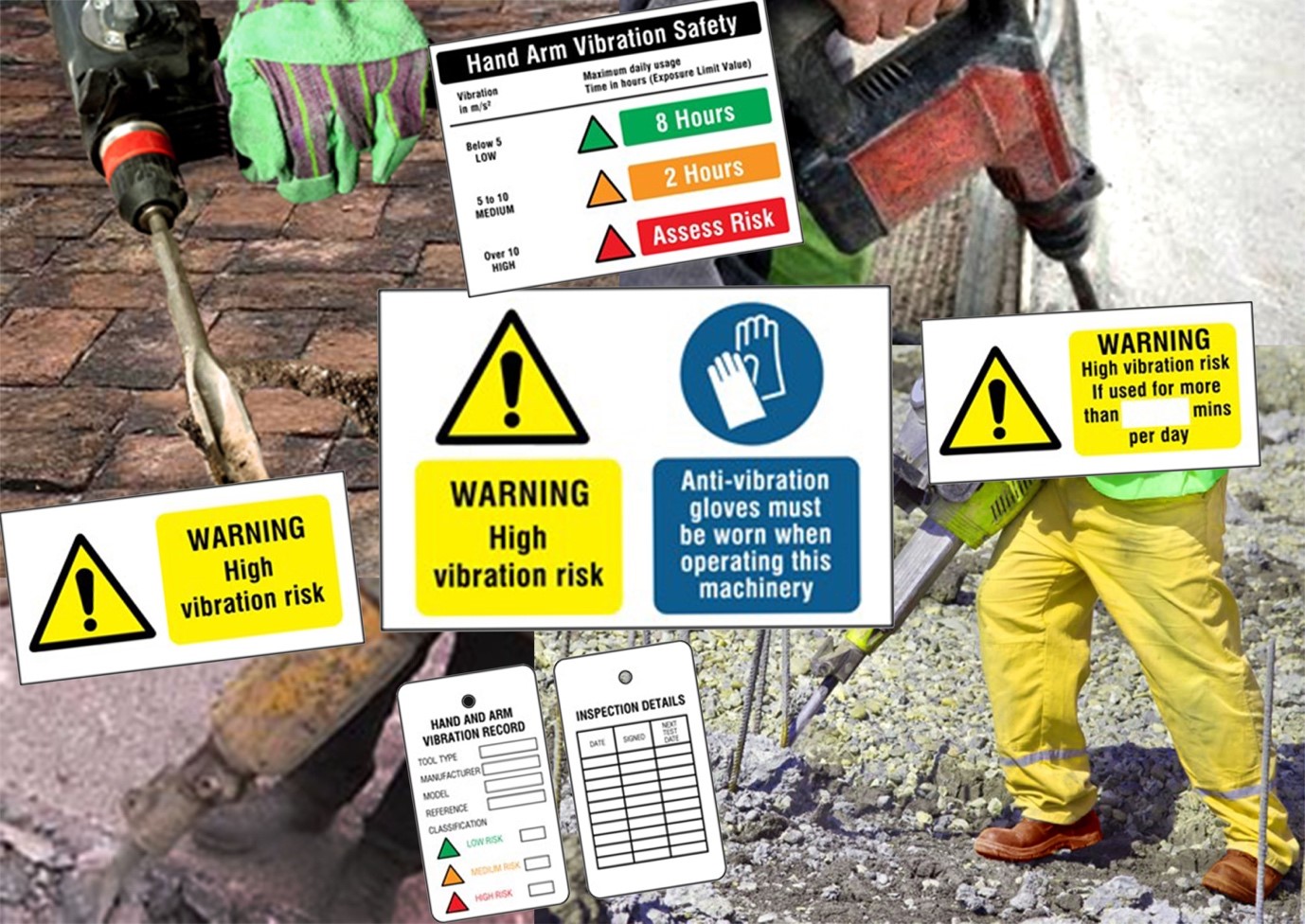 Hand-arm vibration (HAV) refers to the vibration caused by handheld equipment. This can be tools like power drills and equipment that needs to be hand guided.
Hand-arm vibration (HAV) refers to the vibration caused by handheld equipment. This can be tools like power drills and equipment that needs to be hand guided.
While these vibrations can seem small, over time, they can cause significant damage to an employee’s muscles and nerves.
This damage can cause hand-arm vibration syndrome (HAVS), which is a blanket term for conditions caused by persistent vibrations. Conditions ranging from minor carpal tunnel to the more severe Raynaud's disease, sometimes referred to as VWF (Vibration White Finger), can occur.
Hand-arm vibration labels are central to HAVS prevention. Discover how these labels work, what the hand-arm vibration regulations are and how to protect your employees below.
What Do the Hand-Arm Vibration Regulations Say?
The UK guidelines are set under the Control of Vibration at Work Regulations (2005). These regulations introduced action and limit values for hand-arm vibration.
The legislation dictates that businesses must use a Hand-Arm Vibration Exposure Calculator to check how much HAV exposure their employees experience. In the regulations, the action value of vibration is set to 2.5 m/s² and the limit value is 5 m/s².
Values are then translated to Total Exposure Points over an 8-hour day. These are effectively hand-arm vibration time limits. If the action value exceeds 100 points and/or the limit value exceeds 400 points for a working day, then controls must be introduced to decrease HAVS risk to employees.
As part of these controls, hand-arm vibration labels are used to remind employees of the risks, to don suitable equipment and ensure that nobody is exposed to unneeded vibration.
How to Use Hand-Arm Vibration Labels
Before using hand-arm vibration labels, an employer must understand what equipment can cause HAVS. Some common examples are:
- Chainsaws
- Impact wrenches
- Polishers
- Sanders
- Weed cutters
All machinery that has the potential to cause HAVS must be assessed then labelled to reduce risk. The label must be placed directly onto the machine or equipment so it can be seen clearly.
These labels are split into three colour-coded categories:
- Green – Low risk
- Amber – Medium risk
- Red – High risk
This level of risk is dependent on the value results from the Hand-Arm Vibration Exposure Calculator.
In addition to labelling machinery, it is to an employer’s discretion as to whether workstations should be labelled. It is recommended, however, to place hand-arm vibration labels near workstations to remind employees of best practice.
Get Your Hand-Arm Vibration Labels Today
If you’re working with machinery, then it is highly likely that you need good, reliable labels to stay within workplace regulations.
We stock high-quality, dependable hand-arm vibration labels to keep your workplace safe.